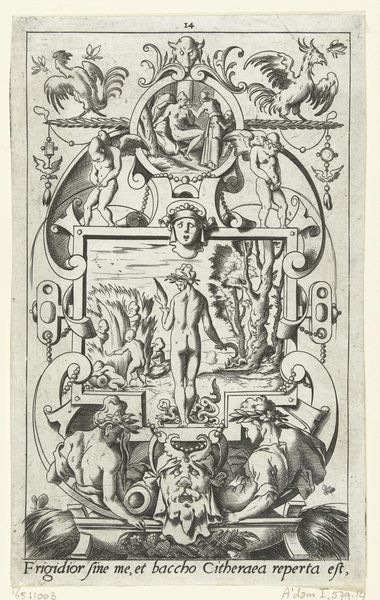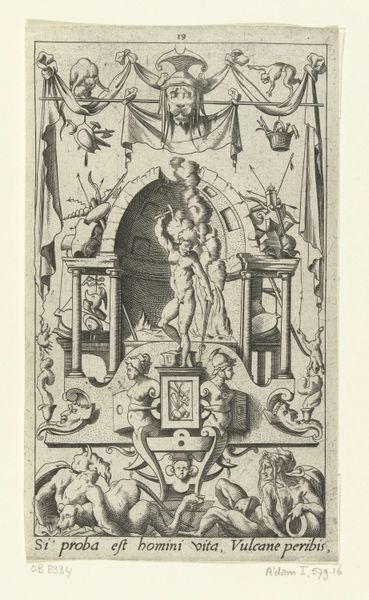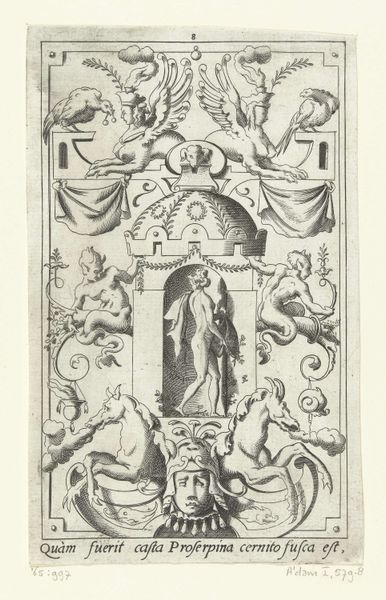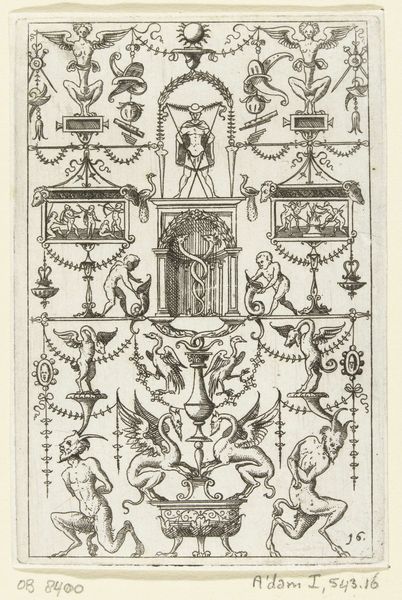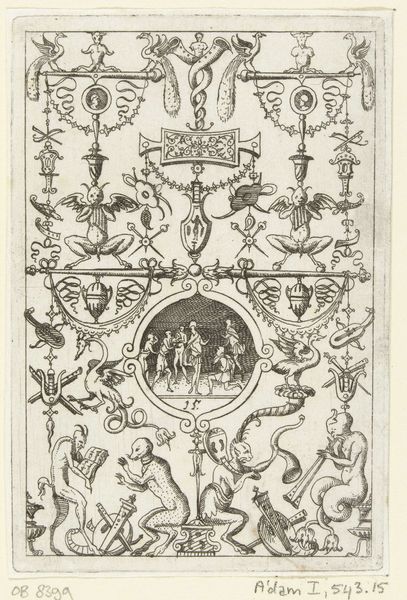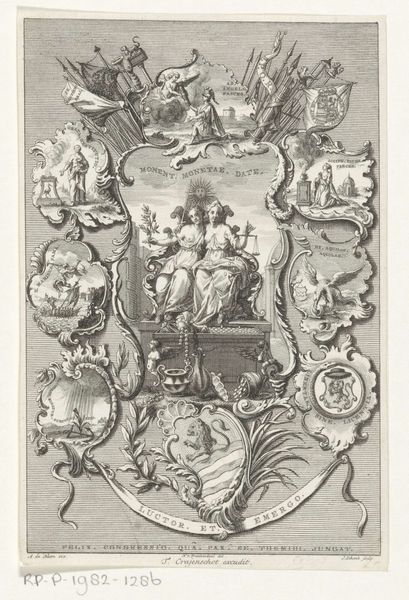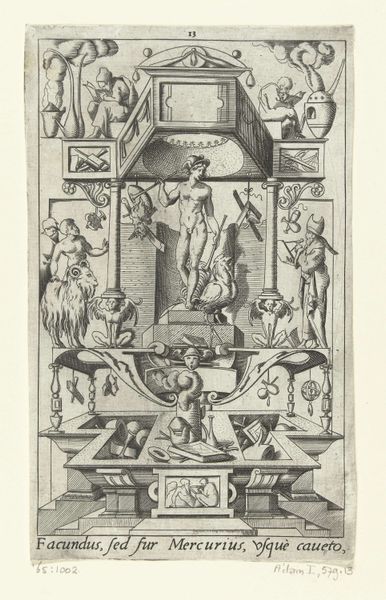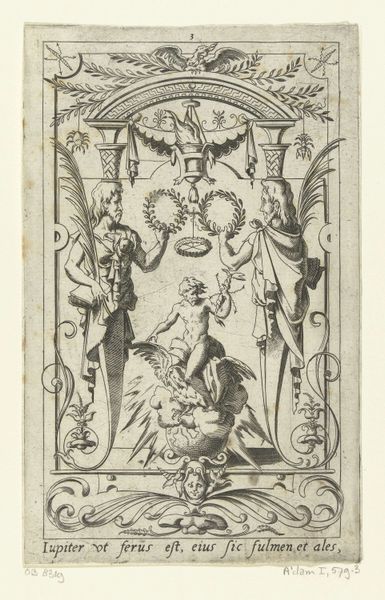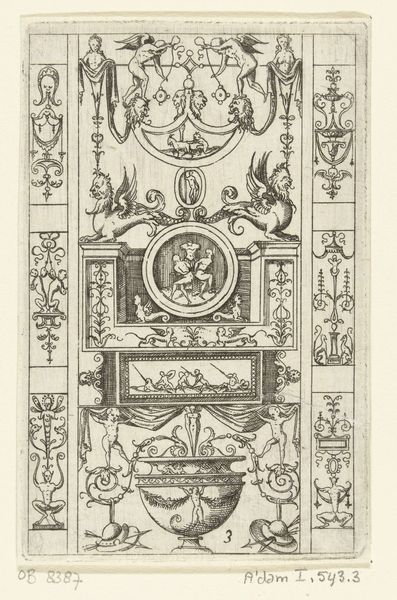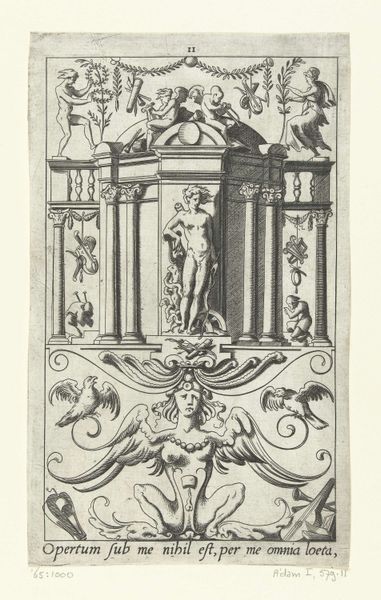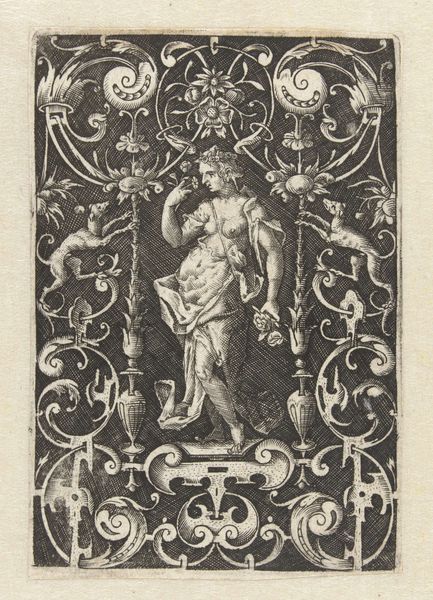
print, intaglio, engraving
#
allegory
#
pen drawing
# print
#
pen illustration
#
intaglio
#
mannerism
#
figuration
#
ink line art
#
11_renaissance
#
pen work
#
nude
#
engraving
Dimensions: height 174 mm, width 106 mm
Copyright: Rijks Museum: Open Domain
René Boyvin made this engraving of Venus and Amor in a rectangular frame sometime in the 16th century. The image presents Venus, the Roman goddess of love, and her son Cupid, also known as Amor, within an elaborate architectural setting. The iconography draws heavily on classical mythology, reflecting the Renaissance interest in antiquity. 16th century France, where Boyvin worked, was a time of religious and political upheaval. As part of the court of Henry II, Boyvin's artistic production was shaped by the demands of the French aristocracy, who used classical imagery to convey power and sophistication. The layout is ornamental, perhaps intended for a book illustration. The Latin inscription, “Et Veneri, et Veneris nato occubuere potentes,” suggests a learned audience. The presence of nudes indicates an openness that would wane as the Catholic Counter-Reformation gained momentum. By studying patronage networks and the circulation of prints, we can better understand how images like this one played a role in shaping cultural values and social identities in early modern Europe.
Comments
No comments
Be the first to comment and join the conversation on the ultimate creative platform.
